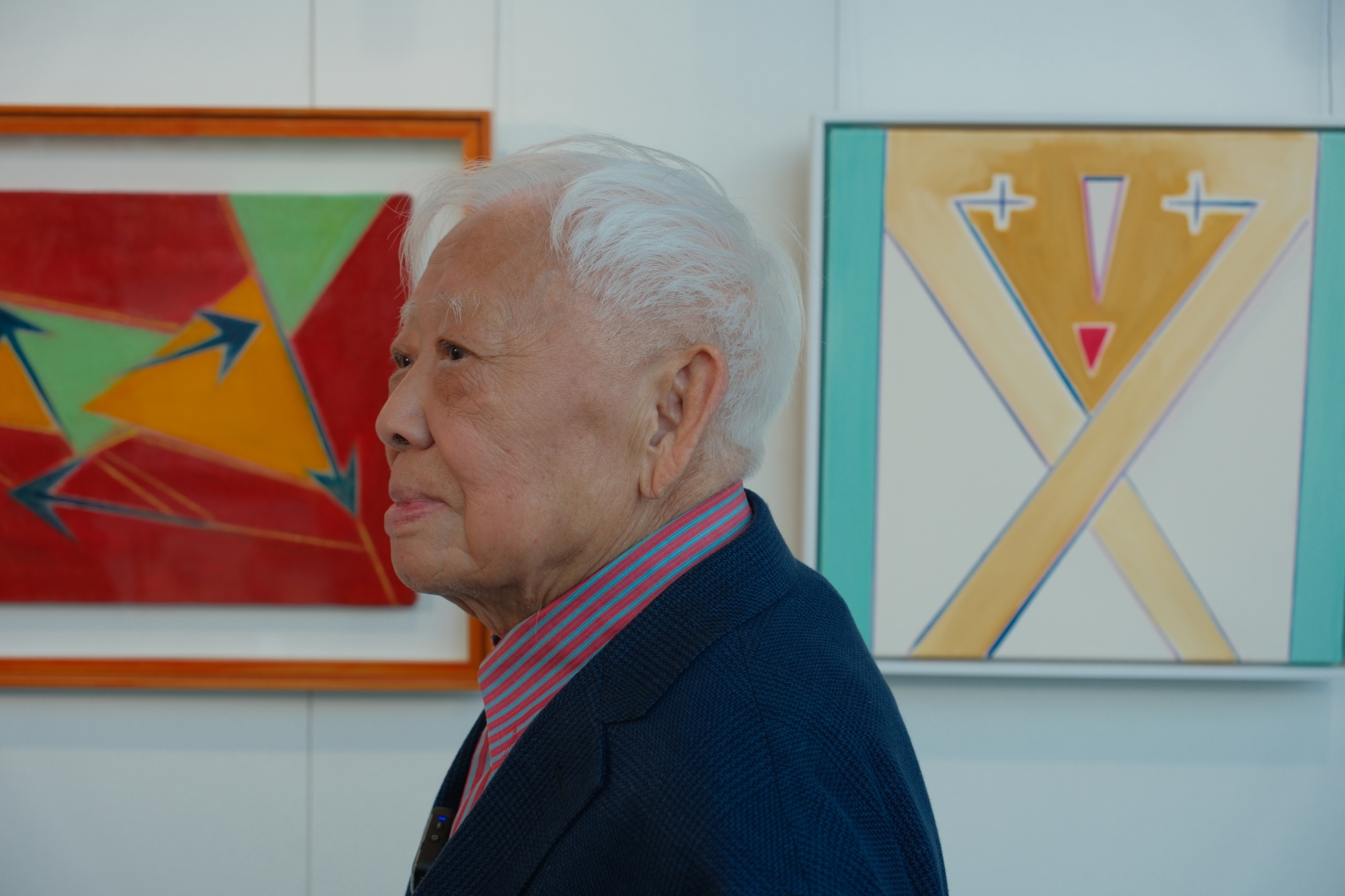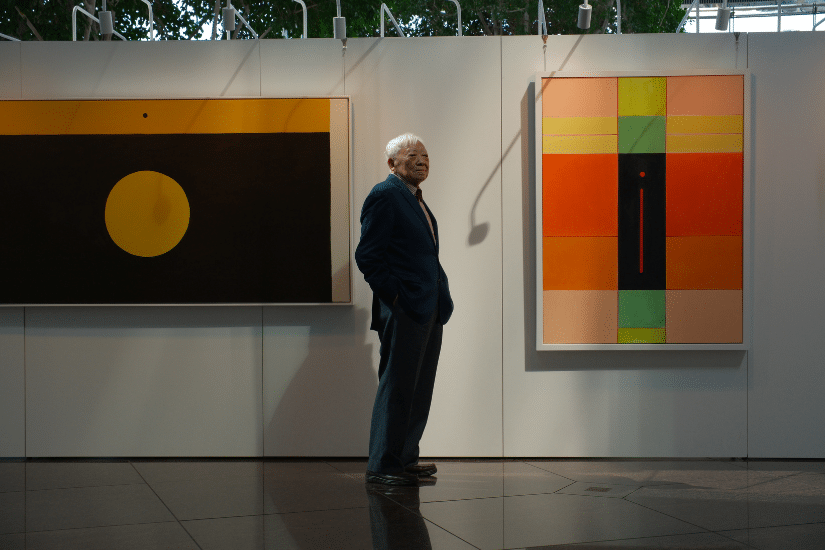There are no limits to creation, nor is it restricted by age. For the legendary Chinese artist Mr. Huo Gang in his twilight years, life should go with the flow, and creation should follow the heart!
Huo Gang is one of the “Eight Eccentric Painters” and a prominent figure in the “Taiwanese Modern Art Movement,” representing an important avant-garde figure in the Chinese art scene. Looking back on his artistic journey, spanning over 70 years, from Nanjing to Taiwan, then Italy, residing in Milan for fifty years. Yet, his passion for creation remains unabated. Experiencing various Eastern and Western cultures, his art style transitioned from hyperrealism to geometric abstraction, creating a unique artistic world.
He immersed himself in and explored the experience of art, each step was bold, but unexpectedly he explained: “I am just walking in this direction, not daring to say that I am bold, but rather because it is difficult that I find it interesting.”
He said that pursuing the unknown is his interest. This pursuit is a lifelong endeavor, and fifty years later, he returned to the place where he studied abroad (Hong Kong) and his birthplace (Nanjing) with his own works. This exhibition is not only an opportunity for artistic exchange but also a reunion journey for him. So, as he returns to his spiritual homeland, he comes to personally narrate this simple yet not so simple creative story.
Between Sensitivity and Rationality
If we were to sum up his style with keywords, he is described as “creating something out of nothing” and “standing out from the crowd.” “I contemplate from multiple angles to create constructive, substantial work, so my style tends towards rationality and abstraction.”
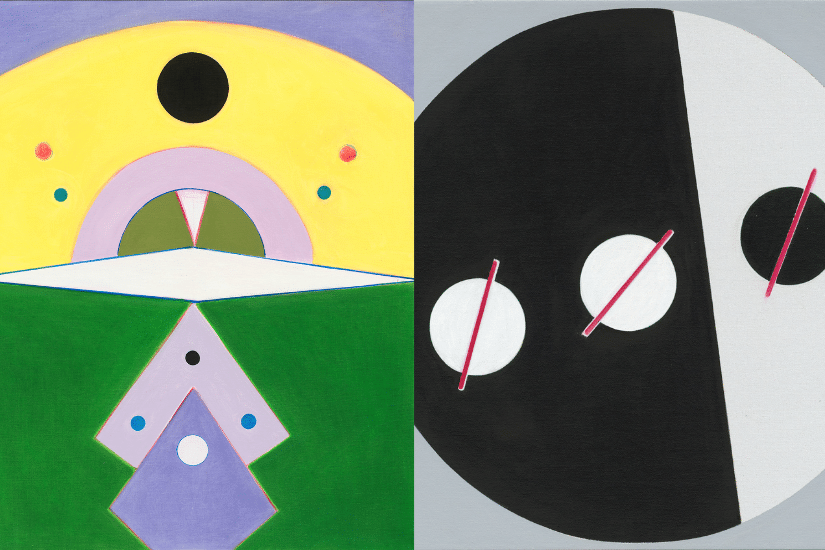
Further Reading:
- 【Art March】Art Central 2024 Exhibition Guide!
- Feel the Magic of Tadao Ando’s Church Architecture with Wind, Light, and Water!
- Unraveling the Mystery of Planet Walala! Exclusive Interview with French Artist Camille Walala
Carefully examine it one by one, from geometric shapes to colors, see how he blends Eastern and Western artistic forms, and understand his artistic world.
Rational geometric shapes give a solid and firm feeling, while his paintings are mostly presented in blue and green tones, unconsciously evoking images of azure skies, rippling lake waters, or winter snow, exuding Eastern lyrical abstract elements. “Painting emphasizes change; I often use cold colors, but occasionally warm colors. Personally, I prefer blue and green tones because they better suit fantasy.”
He doesn’t annotate every piece because he prefers people to interpret and feel his minimalist and poetic visual language for themselves. Beneath the seemingly meticulously calculated rational surface, for Hochen, creation is an act where emotions outweigh rationality. “When I’m in a good mood, I paint; when I’m not, I stop and continue when I feel better. Just like, when I’m at peace, I tend to have more imaginative and inspirational expressions, so creation is absolutely free.”
So in his works, from elements to imagery, there is a mysterious sense of surreal style, along with a spiritual visual poetry. “There are no limitations, but there is a main direction in thought, which is simplicity, not too much, not too complicated; within simplicity, there should also be depth and spirituality to make people think, rather than just painting randomly. If even oneself cannot clarify what is in the painting, cannot explain it, it will become very vulgar.”
The freedom of creation insists on only depicting his thoughts and ideas, which also contain a set of unique thoughts and philosophies. “An artist makes bold assumptions, while a scientist carefully seeks evidence. As an artist, there is no need to be so meticulous, but to offer a kind of thinking that can be something different.”
Watching him, dressed in light blue, leisurely strolling through the art exhibition space, exuding a deep and restrained aura, suddenly the art seems to reflect his persona; and in his conversations, it’s not difficult to sense that pride belonging to an artist, just like the sharp edges of geometric shapes.
Pursuing the finite infinite
Throughout most of his life, he has been deeply devoted to art, and in his speech, one can easily sense his infinite passion. “What I pursue is uniqueness, which is extremely challenging. Also, when creating, I must forget about the painters I like, I need to learn from them but also forget about them, it’s very difficult.”
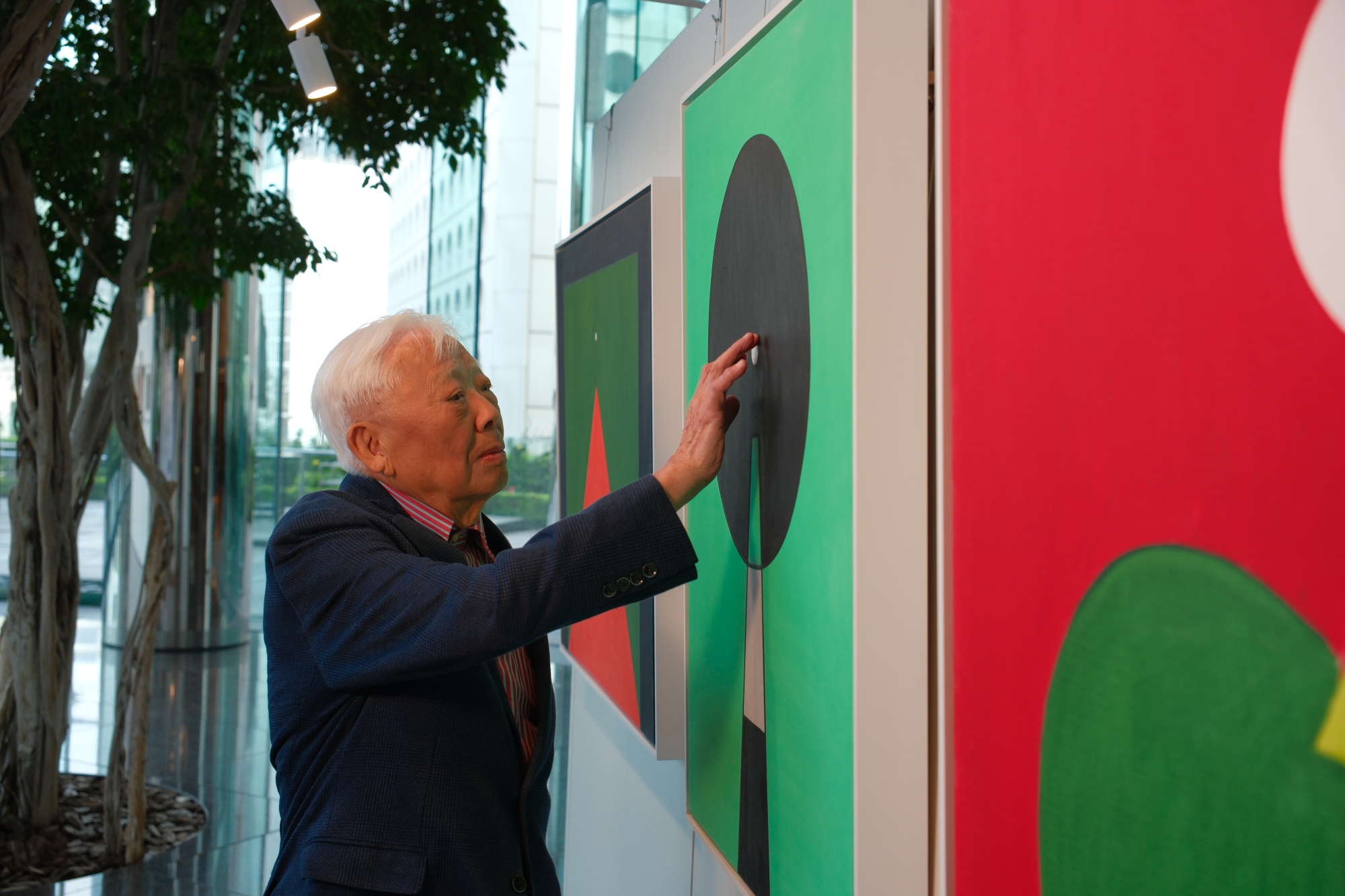
Suddenly remembered when I was a child learning to draw, the teacher did not allow the use of tools such as compasses or rulers. He immediately responded: “I used to think like you, feeling it’s not allowed, but later I found this was a mistake, why not? So when I teach, I also teach students what tools to use for sticking, for brushing, feeling this is completely free, and the effect will be better.”
Breaking away from conventional ideas and creating something others have never thought of before is not easy, of course. His works may seem light, but in reality, they are imbued with profound depth of the soul, making his creative colors increasingly vibrant and distinct.
Abandoning the limitations of surrealism, he chose to express himself with more freedom through abstraction. How exactly is this space arranged and constructed? Using the metaphor of building a house, “each painting is like a space, similar to having a plot of land to build a house on. You have to envision what you want to create, where to leave blank spaces; it’s all up to your imagination. The shapes, lines, colors, light, and other elements in the painting are presented using the elements I like.”
This is simply his creative theme, giving unique meaning and content to every line and dot in his work. “I like minimalist art. The simpler, the better. But the simpler it is, the harder it is to paint. Because it’s very difficult to express something complex in simplicity.”
This one character “difficult” appeared many times in the conversation, each time it appeared you could taste his artistic spirit, complex and rich. The canvas is his artistic world, but this creative space is always limited. Speaking of this, he suddenly reveals a young vigor and rebellious retort, “This is not a worldview for me, but a cosmic view, because a worldview is too small for me.”
Reencounter・Return|Returning with Acclaim
This is Hoggan’s first time participating in the “Mud Art” exhibition at Art Basel in Hong Kong. It is also his first solo exhibition “Reunion・Homecoming” in Hong Kong, which will continue at the Nanjing Biennale, becoming an important milestone in his artistic career.
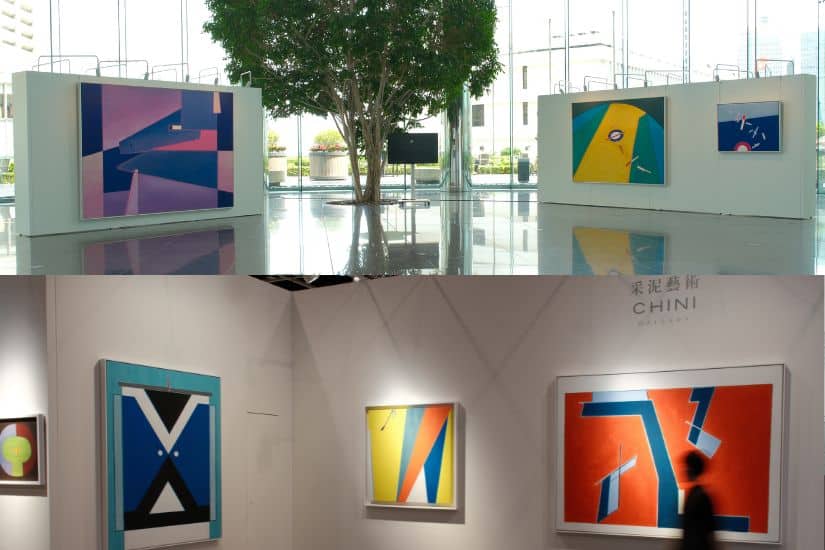
He shared, “Originally, I painted for my own interest, not for exhibitions. But later, I wanted others to see my work, seeking their feedback to help me improve. I hope to receive criticism, not just praise, or else I can’t progress. When people point out my flaws, I reflect on them. If they are right, I naturally make changes; if not, it doesn’t bother me, haha.” Despite his long-standing presence in the art world and significant influence, he remains humble, saying, “I dare not call myself advanced because there are so many human beings. I’m just expressing myself through art. Perhaps others see me as advanced, but I don’t. I’m simply striving towards advancement.”
The overlap and intertwining of these two places exactly present the root and driving force behind Huo Gang’s creation. “For me, painting is a part of life. Life, meaning what one lives for, so I am not involved in art for the sake of eating, but I eat to engage in art. I do not have the ability to be a scientist or a philosopher, but my interest, dedication, and research in something contribute to humanity, seeking higher levels and fields.”
Continue to explore in your unknown world, and he also has a message for dream pursuers: “Boldly pursue, do not be afraid, move forward bravely! This value may not be visible now, but it is limitless, it will continue to influence us, just like water in the desert.”
